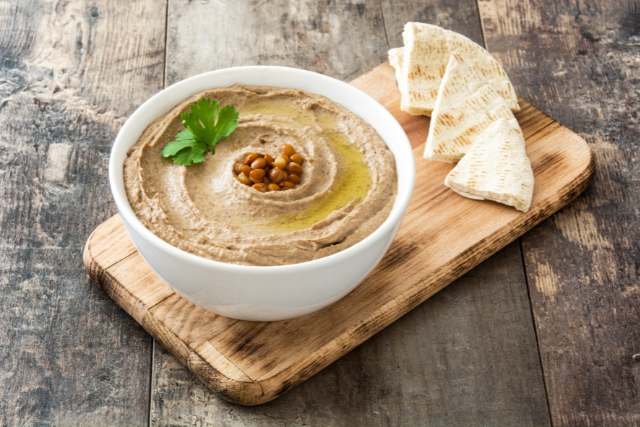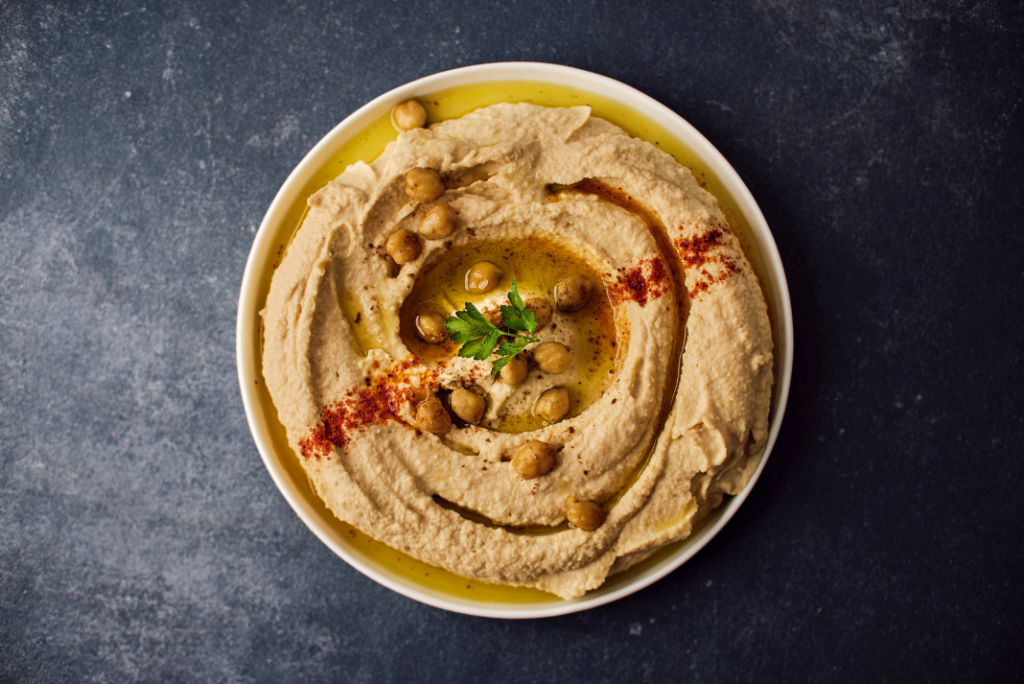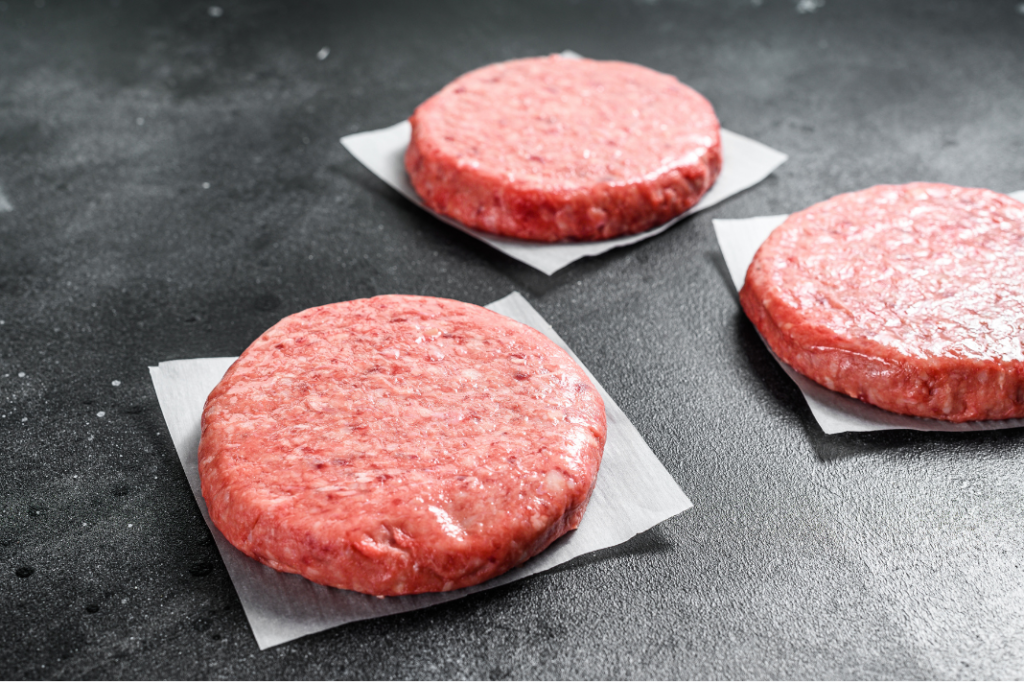The best hummus recipe we’ve ever tried is this one! This velvety smooth homemade hummus is actually superior to store-bought, and with a few easy steps, you can make it at home.
Where from Humus Invented?
Hummus has a long and storied history, and its exact origins are a subject of debate among culinary historians. However, it is widely believed to have originated in the Middle East, particularly in countries like Egypt, Lebanon, and Syria. The earliest recorded recipes that resemble hummus date back to ancient Egypt and the Levant region.
Over time, hummus has evolved and gained popularity worldwide. It’s now a global food item, enjoyed in various forms and flavors. It’s often used as a dip, spread, or accompaniment to a wide range of dishes and is a beloved component of mezze platters and appetizers. Whether homemade or commercially produced, hummus is a versatile and delicious addition to many culinary traditions.
Smooth Hummus Is Easy With This One Trick!
The sequence in which the components are added to your food processor is critical to making the silkiest, most luscious hummus possible. It’s really that simple. Turn your food processor on and pulse the tahini and lemon juice for about a minute until they form a smooth mixture. Take a look at our video to see how whipped and creamy they get.

How to Prepare Smooth Hummus
If we were at the grocery store, you could virtually guarantee that one of us would toss a tub of hummus into our basket. That is, until we discovered this easy hummus recipe, which we honestly feel is superior to anything we could have gotten at the supermarket. It’s also vegan and prepared with natural and nutritious ingredients.
We like preparing dips and have shared quite a number of them over the years. Here are a few additional recipes to try: roasted red pepper hummus, black bean dip, roasted eggplant dip (baba ganoush), or creamy cheesy bean dip.
What is Hummus?
Let’s define hummus so that everyone is on the same page.
Hummus, often spelled as “houmous” in some regions, is a delicious and popular Middle Eastern dip or spread. It is known for its creamy texture, savory flavor, and versatility. The word “hummus” itself is an Arabic term, which means “chickpeas.”Hummus is made primarily from mashed or pureed cooked chickpeas, blended with tahini (a paste made from ground sesame seeds), lemon juice, garlic, and olive oil. These key ingredients are often complemented with seasonings such as salt, cumin, and paprika.
Store-bought versions are available in grocery stores, but we believe you should avoid them and prepare your own. Allow us to demonstrate!
Hummus Ingredients
- Hummus is made from chickpeas (or garbanzo beans). The softened beans become a smooth paste. In this recipe, you may use canned or home-cooked chickpeas. I use both interchangeably, giving home-cooked chickpeas a little taste advantage. Here’s how I prepare dry chickpeas.
- Tahini is a sesame seed paste that is ground. It enhances the flavour of the hummus. Tahini may be purchased at a shop or made at home. We use homemade tahini to produce completely handmade hummus. It’s simple to manufacture yourself. Here’s our tahini recipe, along with a video demonstration on how to prepare it. It may be stored in the refrigerator for up to a month. Our tahini recipe yields enough to make two batches of hummus.
Making hummus without tahini: There are two groups among hummus fans. Some people like the spicy, acidic taste of tahini, while others don’t. We enjoy it both ways, but for the finest hummus that rivals our favourite retail brands, incorporate tahini. Leave out the tahini if you want to make hummus without it. Even without it, chickpea purée is extremely tasty. Simply add additional olive oil. Another alternative is to substitute genuine unsweetened creamy peanut butter. - Fresh lemon juice is essential for making delicious hummus. Bottled lemon juice isn’t nearly as delicious.
- Fresh garlic provides a little zing and flavour. I add one little clove and it’s perfect. You may also make roasted garlic hummus by adding roasted garlic. You can watch how we roast garlic in this video.
- Ground cumin and salt contribute to the excellent flavour, and the ground cumin gives a bit more spice and richness.
- Hummus has a rich texture because to the addition of olive oil. When we serve the swirly hummus, we additionally sprinkle it with olive oil. When cooking hummus, I prefer to use fruity, light-flavored olive oils.
In addition to the elements listed above, you may experiment with other flavours and ingredients for your hummus. For a red pepper hummus, I like to add roasted red peppers, but olives, pine nuts, and more spices are all good possibilities.

So, What’s the Secret to Making the Best Hummus?
To make the best and creamiest hummus, follow this homemade recipe:
Ingredients:
- 1 15-ounce can of chickpeas (garbanzo beans), drained and rinsed
- 1/3 cup of fresh lemon juice (about 1 large lemon)
- 1/4 cup of well-stirred tahini (sesame paste)
- 1 small garlic clove, minced
- 2 tablespoons of extra-virgin olive oil, plus more for serving
- 1/2 teaspoon of ground cumin
- Salt to taste
- 2 to 3 tablespoons of water
- Dash of paprika and some fresh parsley, for serving (optional)
Instructions:
Peel the Chickpeas (optional but recommended): Place the drained chickpeas in a large bowl and cover them with water. Gently rub them with your fingers to loosen the skins. Skim off the loose skins that float to the top. Discard the skins and drain the chickpeas.
Blend Ingredients: In a food processor, combine the chickpeas, lemon juice, tahini, minced garlic, cumin, salt, and two tablespoons of olive oil. Process for about 20-30 seconds. Then, scrape down the sides of the bowl and process again.
Add Water and Blend: With the food processor running, gradually add two to three tablespoons of water until the hummus becomes ultra-smooth, light, and creamy. Continue to process for an additional minute.
Taste and Adjust: Taste the hummus and adjust the seasoning. You might want to add more salt, lemon juice, or cumin. If the hummus is too thick or not as smooth as you’d like, continue to blend while slowly adding more water until you reach your desired consistency.
Serve: Transfer the hummus to a serving dish, drizzle it with olive oil, and sprinkle with a dash of paprika and some fresh chopped parsley for a touch of color and flavor.
Enjoy: Hummus is best served at room temperature. You can serve it with pita bread, fresh vegetables, or as a dip for your favorite snacks.
Homemade hummus is a delightful, healthy, and versatile treat. Adjust the ingredients to your taste, and you’ll have a creamy hummus that’s even better than store-bought.




That looks delicious